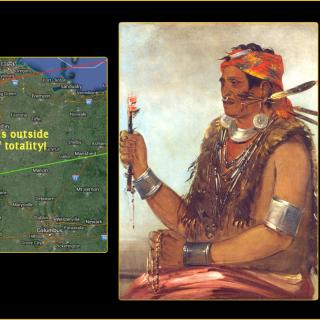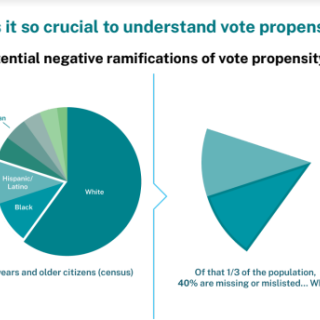Advertisement
Quietly and gradually since the 1980s, a bastion of free-market excess on Franklin County’s southernmost border has been selling-out the American worker while making piles upon piles of money for a select few. It is called “Free Trade Zone #138,” and its main operations are located at Rickenbacker Inland Port, which of course was once Rickenbacker Air Force Base.
In 2013, a record breaking $6.3 billion in merchandise was imported into Free Trade Zone #138, ranking it in the top-10 of the nation’s 177 Free Trade Zones or FTZs, this according to the Columbus Regional Airport Authority, the zone’s operator and federal grantee. The growth of foreign-made goods brought into FTZ #138 has been staggering over the last decade. In 2006, just $250 million was processed.
An FTZ site essentially is a logistics hub legally outside the jurisdiction of US Customs and thus goods can be imported to the site without paying custom duties and other fees. For the most part, FTZs are intended for companies that import parts from around the world, assemble the final product in the US, and then be required to only pay a duty on the final product.
The ironic thing is, some of the multi-nationals that utilize FTZ #138 – The Gap, Abercrombie and Fitch and L Brands, which includes Victoria Secrets – don’t import parts to manufacture anything as their foreign goods simply need a price tag and a clothing hanger.
How the region’s FTZ became such a buffet for foreign goods in a relative short time is something the Columbus Regional Airport Authority doesn’t elaborate on. But you can bet your paycheck that FTZ #138, and all US-based FTZs for that matter, continue to degrade the American worker, while also marginalizing small, locally-owned businesses.
“On the national level, the national foreign trade zone board, changed their requirements, so that it made it much easier, much quicker, and much more efficient for a company to become activated within a zone,” says Angie Tabor, of the Columbus Regional Airport Authority and FTZ #138 spokesperson. “And with that, we have seen the number of (local) companies taking advantage of a foreign trade zone on the rise.”
FTZ #138 mission statement is to “Help Central Ohio Companies Globally.” Cathi Steele, editor of The Mid-Ohio Worker newspaper, scoffs at such a notion that it benefits all of Central Ohio, and far from it, to be exact. It mostly benefits a select few owners and executives, their upper management, and their shareholders, she says.
Steele recently attended a local Democratic Club meeting where a Columbus City Council member, who she refuses to name, told the audience city tax revenues were flat even though the unemployment rate has been steadily declining. But politicians shouldn’t whine, she adds, when behind the scenes some are furthering FTZ #138 by promoting the zone’s generous tax breaks to super rich constituents.
“The city and state are always complaining about having no money,” says Steele, “so why give so many tax breaks (at FTZ #138)? It’s duty free for the corporations. It’s a 15-year property tax abatement at 100 percent. There’s importing, inventorying, warehousing tax breaks.”
What’s more, Franklin County has subsidized FTZ #138’s most important tool – the airport at Rickenbacker – to the tune of $132 million over three decades, and $43 million over the last ten years.
Meanwhile, the people who work within FTZ #138 warehouses are mostly temporary workers making $9-an-hour, says Steele, because multi-nationals are not pressured to pay a living wage to FTZ workers because most zones lack unionization.
The multi-nationals using FTZ #138 are actually pulling off a double dose of exploitation, or a triple dose if you count the tax breaks. Locally-based L Brands first outsources its manufacturing to Indonesia, Bangladesh and China, where the wages are pitiful and the work excruciating. Then they low-ball the pay of their American warehouse temporary workers, who endure a job from monotony hell as “pick-packers.”
Steele has tried to pinpoint just how many temporary workers are employed within FTZ #138. But like many of aspects of many FTZs, that information is withheld from the public.
“Anecdotally, every worker we’ve met who works there, works in a low-wage temporary job, and there’s over 100,000 workers affiliated with this Free Trade Zone,” she says.
Many temporary workers within FTZ #138 are poorly treated by managers who scrutinize their every move, says Steele. At the end of the day, the $9-an-hour is an insulting amount that financially marginalizes the worker and places them on the brink of disaster, even when faced with a common occurrence such as car trouble.
One Japanese corporation utilizing FTZ #138 is Bare Escentuals, an online and national chain make-up store. Steele says Bare Escentuals mostly uses temporary workers, and strings them along with promises of full-time employment. Until they are put on what is called in the temporary industry as a “DNR” list, or a “Do Not Return” list. Steele says the acronym is a cold-hearted play on the “Do Not Resuscitate” legal order sometimes given to healthcare workers.
“Imagine coming all the way out to the warehouse at Rickenbacker and being told to turn back around and go home,” says Steel. “One of the big things is, if you make $8 to $10 an hour you can’t afford decent transportation, and there’s no public transportation out there.”
On the FTZ #138 web site there is a “zone calculator” for businesses to see just how much money they can save by using the FTZ. As Steele sees it, the calculator, like the FTZ itself, is enticing companies to sell-out American workers by making their product overseas on the cheap.
“It’s a global race to the bottom,” quips Steele.



